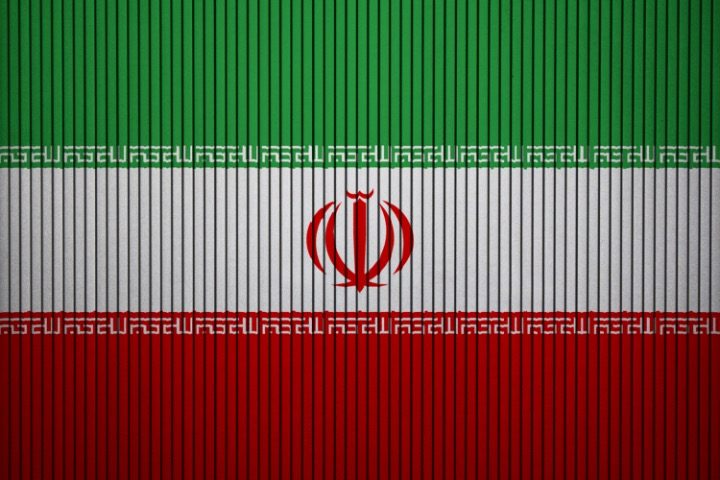
On January 1, Iran’s Alborz destroyer crossed the Bab-el-Mandeb Strait and entered the Red Sea, as per reports by the country’s state-run IRNA and Tasnim news agencies. The deployment followed a deadly encounter between U.S. warships and Yemen’s Houthi militants in the waterway on December 31.
The Iran-affiliated Shiite group has dominated large expanses of Yemen, including the capital, Sanaa, and the port of Al-Hudaydah since an internal conflict erupted back in 2014. In November, the Houthis began attacking commercial ships passing through the Red Sea, which they believe to be Israeli-owned or bound for Israel. The militants alleged that they were acting in solidarity with the terrorist group Hamas in Gaza.
According to an IRNA report on January 1, the Alborz destroyer was sent to the key waterway, which accounts for about 12 percent of all global trade, owing to “heightening tensions.”
Based on statements by Iranian officials, the 51-year-old vessel, originally sold to the shah of Iran by Britain, will oversee naval missions in the Indian, Pacific, and Atlantic oceans.
Such a move puts Iran’s military into an increasingly volatile crisis unfolding in the Red Sea, where tensions have skyrocketed following the Israel-Hamas war in the Gaza Strip.
On the evening of December 30 and the morning of December 31, two American destroyers, the USS Eisenhower and USS Gravely, responded to two consecutive distress calls by Maersk’s Singapore-flagged container ship Hangzhou, which is owned and operated by Denmark. The second face-off witnessed various U.S. helicopters opening fire on four small boats manned by Houthis. Three were destroyed as a result, U.S. Central Command (CENTCOM) said in a post on X (formerly Twitter).
A Houthi spokesperson, Yahya Saree, verified the incident, disclosing that 10 of the group’s militants had either been killed or gone missing.
Based on estimates by the Pentagon, the Houthis have attacked or seized 23 commercial ships in the Red Sea since November 19.
The U.S. Navy, together with warships from nine other nations, has been patrolling the waterway since December 19 as part of Operation Prosperity Guardian, an international coalition to patrol the Red Sea. The Houthis have slammed the deployment as an “integral part of the aggression against the Palestinian people, Gaza and the Arab and Islamic nation.”
Although Tehran has dismissed Washington’s accusations of its involvement in attacks, Iranian Foreign Minister Hossein Amir-Abdollahian alluded to purported double standards when talking to his British counterpart, David Cameron, on December 31.
“Israel can’t be allowed to massacre women and children and carry out a genocide in Gaza and set fire to the region, but consider stopping an Israeli ship in the Red Sea as endangering the security of this economic waterway,” the Iranian diplomat maintained.
In turn, Cameron said on social media that “I made clear that Iran shares responsibility for preventing these attacks,” pointing out Tehran’s “long-standing support” for the Houthis.
On January 1, Britain’s Defense Secretary Grant Shapps declared that Britain was “willing to take direct action” against the Houthis “to deter threats to freedom of navigation in the Red Sea.” British Prime Minister Rishi Sunak’s spokesperson denounced the attacks as “unacceptable” and “destabilizing.”
Likewise, the United States denounced Iran for being “deeply involved” in the Houthi attacks. Iran has disavowed such accusations, saying the Houthi rebels were acting on their own.
In 2021, the Alborz resisted a pirate attack against two oil tankers in the Gulf of Aden.
Moreover, the Alborz was one of two Iranian warships deployed in 2015 to the strait “to ensure the safety of commercial ships” in what was regarded at the time as a sign of tensions with Saudi Arabia.
Al Jazeera’s Resul Serdar, reporting from Djibouti, posited that Iran mobilizing a warship to the region was not a “new” development.
“From time to time” there have been Iranian warships operating in this area, he asserted. “These waters are open to Iranian warships, as they’re open to many countries.” He added that “more and more warships” are now gathering in the region, including those belonging to the United States and Britain.
In December, the U.S. unveiled Operation Prosperity Guardian. The U.K. deployed a naval destroyer as part of the coalition, and Denmark said that it would also send a frigate to join the operation.
Although the EU agreed to join the U.S. effort, countries such as France and Spain declared that their military vessels in the region would remain under national control.
“We’re keeping a French command in this affair and we’re continuing to act in self-defense,” French Armed Forces Minister Sébastien Lecornu told French TV on January 2. The French Languedoc FREMM multipurpose frigate is presently in the region, a French official said.
For years, the Red Sea has been a crucial thoroughfare for shipborne cargo and energy exports. Tankers carrying up to 10 percent of the world’s oil pass through its waters. The price of Brent crude rose by 2 percent to $78.58 a barrel on January 2 in the wake of last weekend’s attacks. BP has already announced that it will reroute its vessels to avoid the region, which likely implies longer journey times and higher costs for consumers.
Shipping companies are diverting their vessels around Africa instead of traversing the Red Sea. The economic ramifications are limited “although clearly not zero” thus far, wrote UBS Wealth Management chief global economist Paul Donovan.
Maersk, the world’s largest shipper, ceased sending its vessels through the Red Sea on December 31 after a missile hit the Hangzhou. Hours later, Houthi boats attacked the same ship.
On January 2, Maersk said that it would “pause all transits through the Red Sea/Gulf of Aden until further notice,” adding that “in cases where it makes most sense for our customers, vessels will be rerouted and continue their journey around the Cape of Good Hope.”
Hapag-Lloyd, which also stopped shipping via the Red Sea last month, announced that it would extend the travel pause for at least another week. “We monitor the situation closely day by day, but will continue to reroute our vessels until January 9th,” a company spokesperson told reporters on January 2.
Other shipping majors, including Evergreen Line and MSC Mediterranean Shipping Company, have similarly halted transporting cargo via the Red Sea amid Houthi attacks. As the waterway is a key route connecting Asia and Europe and facilitates roughly 12 percent of global trade, observers have contended that the stop in shipping through the passage is already disrupting global supply chains, pushing up freight costs and prolonging delivery times.

